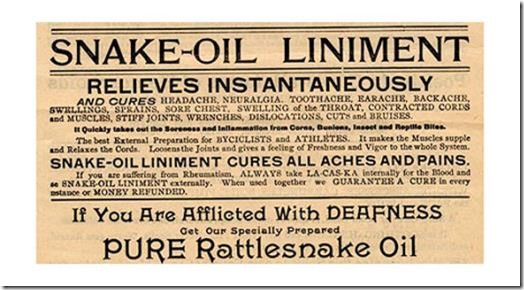This came through on the newsfeeds, and I’m sure a lot of people have read about it in the newspapers today (and as of Christmas 2015, the story has become – perhaps not surprisingly – very popular again).
The story deals with Alcopal tablets, an internet “medicine” which can allegedly make a breathalyser reading read 9 times lower than it should do. In typical fashion, the Mail’s hacks demonstrate a total lack of any academic skills and write:
The pills, which are taken before and after a drinking session, are said to prevent alcohol being absorbed through the stomach and into the bloodstream.
[Kibble said]… “Because it prevents the uptake of alcohol and gives some protection to your liver and kidneys you’re more in control.”
When I read this, my first thoughts were:
- how does it work?
- what’s the active ingredient?
- so, does it really work?
None of this occurred to the Mail’s amateur staff, though. So when I looked up the same story in The Mirror, I got a bit more information:
The pill, called Alcopal costs £20 for a pack of 20, is said to neutralise alcohol in breath samples.
Birmingham businessman Mr Kibble, who admitted he had been caught drink-driving in 2002, bragged on his website about Alcopal “making all the difference” if a motorist is breathalysed…
“And I must stress that these tablets do nothing to improve the performance of a driver who has been drinking.”
I’m not sure where the Mail got its own information from, but it sure ain’t the same as what the Mirror said – and both purport to be quoting the comedian who sells the tablets (and who looks like (and admits to) he knocks a few back anyway). Neither source seems the least bit interested in whether it really does work, and are happy to go on what the seller says.
While we’re on the Mirror story, note the moron, Karel Reil, in the comments. He thinks it’s a good idea. I wonder why?
In the Mail story, Kibble is quoted as saying his lawyers have checked the tablets and they’re not illegal. Well, it’s not illegal to harvest Unicorn horns, either – but I’m pretty certain it would become so if Unicorns actually existed. Kibble is just on borrowed time, since he will be directly responsible for the death of the first person killed by any piss artist who uses these things and then drives.
The active ingredient is called Simethicone. It is an antifoaming agent used to suppress gas in the stomach. It’s an ingredient in Alka-Seltzer and other antacid products. It also comes in some hair conditioners as a glossing agent.
It’s worth bearing in mind that anything which prevents absorption of substances through the stomach or intestinal walls can also do the same thing with other medicines. Some antibiotics specifically advise against taking any antacid product during treatment as absorption is affected.
At £1 per tablet, and supplied in a tiny plastic container, I suspect that you’d need a hell of a lot of these to absorb the alcohol in a keg of beer, because that “nine times lower” line suggests that you can drink 10 pints and give a breath reading that looks like you only drank one! So it’s highly likely that the effect is just a masking one to fool the breath testing machine (the effect on other medicines, of course, could still be significant).
Let’s face facts here. If you really could drink a vat of beer, take a tablet, and come up stone cold sober, someone much bigger than Kibble would have jumped on it a long time ago. I mean, it isn’t as if this hasn’t been looked into for all kinds of reasons.
In any case, the average piss head is hardly going to be happy necking beer without getting drunk – which would have been his primary objective when he went to the pub in the first place. That’s why alcohol-free beer doesn’t sell. So something about what the tablets do doesn’t quite fit in, does it?
Still, Kibble has got a load of free advertising to help him on his way…
Disclaimer: The term “dickhead” is a valid description for anyone who seeks to bypass the law in some way, especially when they haven’t made sure it is safe to do so. So in this case, someone selling a product which fools the breathalyser whilst leaving the drinker pissed in order to drive a car without being pulled can legitimately be labelled a “dickhead”. Similarly, anyone who buys such products in order to bypass the law (i.e. to fool the breathalyser) whilst knowing full well that they’re pissed can also legitimately be labelled a “dickhead”.
EDIT: The hits on the blog have gone through the roof since I first posted. I think most people are just interested in bypassing the law (only two out of hundreds have asked about the ingredients). If I’d have linked to Kibble’s website (which I deliberately didn’t), I’m sure it would have been clicked to death.
This Sun story today won’t be of interest to all the chavs out there who think they’ve found a miracle pill, and who wouldn’t care who they killed as a result of being off their heads, but some people just might find it educational.
The Sun story has a photo of the pills. I’m prepared to stick my neck out as a chemist here and say to anyone reading this that there is no way on earth something that small can physically stop all the alcohol in umpteen pints of beer or shots from getting into the blood stream. Knowing what the composition of Simethicone is, I can also assure people that there is no way it can prevent the body from absorbing that all of that alcohol, either. Simethicone is pretty inert pharmacologically, and it can only have any meaningful action on the actual contents of the stomach and gut. Its usual mode of action is to reduce the painful pressure formed by small gas bubbles by making them join together into bigger bubbles – resulting in burps or farts!
All Alcopal is likely to do is confuse the breath tester, which is what one of the original stories said it did when quoting the salesman behind it. If you drink 10 pints, you’ll still be pissed – even if the breath machine says you’ve only had one.
EDIT: This ITN story has a screenshot of the website. It appears that Kibble is claiming that it DOES stop alcohol being absorbed from the stomach and intestines. That’s not what he said to the Mirror – although reading it again, he might have been trying to be funny.
Trust me when I say that you’d need a shovel full of the stuff to absorb the alcohol in several pints of beer or to line the stomach – and that’s assuming that it even does either of those things. And I say again that the typical piss head won’t want to spend money if he can’t get drunk. He could buy alcohol-free beer for that.
EDIT: It would appear that the tablets being sold are made in India. The only relevance of that is that they are probably costing fractions of a penny to make. And even though there is no clinical trial research to bankroll, Kibble is selling them for £1 a pop, or £20 for a small tub. He’s also hawking them as “herbal” or “natural”, which is not correct – Simethicone doesn’t come under that heading.
EDIT: So far, I’ve not been able to locate any American information regarding the “ban”. Every news source in the entire world is just quoting exactly what is said in the tabloids over here without adding anything new.
However, Simethicone is identified as a teratogen – it can potentially cause birth defects – according to one article, though others say it is safe. Another article identifies side-effects such as hypotension, fever, weakness, nausea, and vomiting.
This could explain why it was banned in America, and why drug companies dropped it. There’s no way they would take risks like that, and the dosage levels for the purpose intended may well have had some effect on the conflicting reports on teratogenicity. The product being sold over here could cause birth defects according to at least one source. These include heart defects, extra fingers and toes, and problems with the urinary tract (hypospadias) according to the same source.
Note that there are updates to this:
Where do I buy Alcopal?
It’s available in most stores. Go to the confectionery section and look for Smarties or M&Ms. They work just as well. An added bonus is that they’re cheaper than the branded alternative.
If you are seriously thinking of using this stuff, get professional help fast.
Does Alcopal work?
No.
Are you sure?
Yes.
 I’ve written before about how lessons have been given to those as young as 11, and that that particular course was being championed by self-declared motoring guru (and former Top Gear presenter), Quentin Willson. I said then that I believe children should be kept away from cars – which are for adults – but taught road safety through cycling proficiency and things like The Green Cross Code, etc.
I’ve written before about how lessons have been given to those as young as 11, and that that particular course was being championed by self-declared motoring guru (and former Top Gear presenter), Quentin Willson. I said then that I believe children should be kept away from cars – which are for adults – but taught road safety through cycling proficiency and things like The Green Cross Code, etc. lay “keepy-up” for hours on end – but he seldom has any cause to do it when he is playing a match. However, the skills required to play “keepy-up” are his bread and butter, and without them he would not be a player of a very high standard. Oh, he could thrash his way around the field, and use his muscles and brawn to pole-axe opponents, but that would simply be a mask to hide his lack of proper skill.
lay “keepy-up” for hours on end – but he seldom has any cause to do it when he is playing a match. However, the skills required to play “keepy-up” are his bread and butter, and without them he would not be a player of a very high standard. Oh, he could thrash his way around the field, and use his muscles and brawn to pole-axe opponents, but that would simply be a mask to hide his lack of proper skill.
